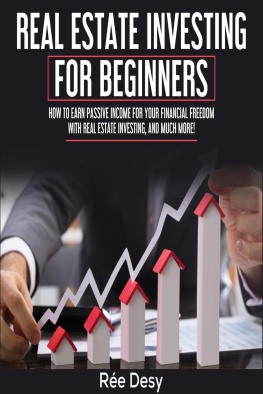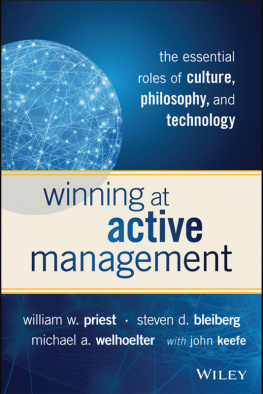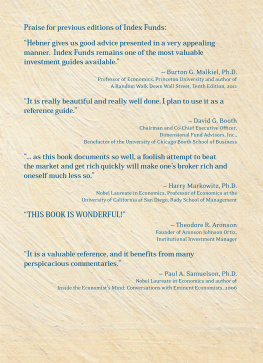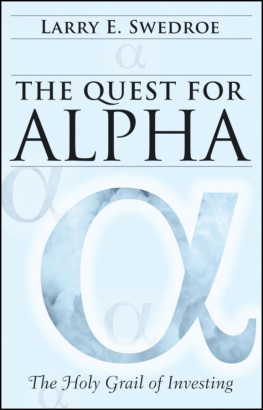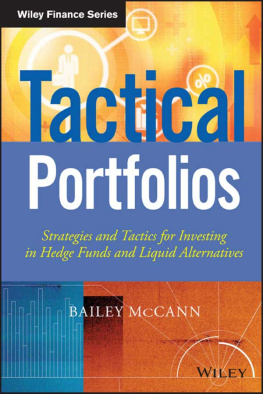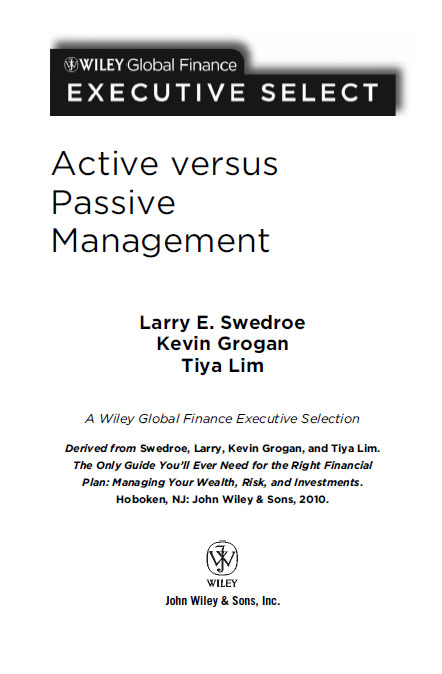Copyright 2010 by Larry Swedroe, Kevin Grogan, and Tiya Lim. All rights reserved.
Disclaimer. This content is excerpted from The Only Guide You'll Ever Need for the Right Financial Plan: Managing Your Wealth, Risk, and Investments, by Larry E. Swedroe, Kevin Grogan and Tiya Lim (978-1-576-60366-6, 2010), with permission from the publisher John Wiley & Sons. You may not make any other use, or authorize others to make any other use of this excerpt, in any print or non-print format, including electronic or multimedia.
Limit of Liability/Disclaimer of Warranty: While the publisher and author have used their best efforts in preparing this book, they make no representations or warranties with respect to the accuracy or completeness of the contents of this book and specifically disclaim any implied warranties of merchantability or fitness for a particular purpose. No warranty may be created or extended by sales representatives or written sales materials. The advice and strategies contained herein may not be suitable for your situation. You should consult with a professional where appropriate. Neither the publisher nor author shall be liable for any loss of profit or any other commercial damages, including but not limited to special, incidental, consequential, or other damages.
The active versus passive debate is a contentious issue. Filled with concrete evidence and comprehensive money management strategies, this chapter from The Only Guide You'll Ever Need for the Right Financial Plan delves into the case for passive investing over active investing. You can do so by investing in passively managed investment vehicles like index funds and passive asset class funds. You are virtually guaranteed to outperform the majority of both professionals and individual investors. Written for savvy investors and advisors, this chapter helps you:
Integrate a passive investing strategy
Maintain your portfolio's risk portfolio in a tax-efficient manner
Determine the difference between the theories of efficient versus inefficient markets
Make cost-effective investment decisions
From Larry Swedroe, the author of the bestselling series of The Only Guide investment books, with Kevin Grogan and Tiya Lim, this chapter helps you integrate diversification, low turnover, and asset allocation into one plan that meets the needs of a unique situation.
Derived from Swedroe, Larry, Kevin Grogan, and Tiya Lim. The Only Guide You'll Ever Need for the Right Financial Plan: Managing Your Wealth, Risk, and Investments. Hoboken, NJ: John Wiley & Sons, 2010. 978-1-576-60366-6; 224 pp.
978-1-118-00654-2
978-1-118-00656-6
CHAPTER 9
Active versus Passive Management
For many investors, the active versus passive debate is the most contentious issue. We will present the evidence and hope you are convinced to follow our recommendation. However, the rest of the advice in this book applies regardless of which strategy you use to implement your investment plan.
There are two theories about investing. The conventional wisdom is that markets are inefficient. Smart people, through diligent efforts, can uncover which stocks the market has under or overvalued. This is called the art of stock selection. Smart people can also time the market, getting in ahead of the bull emerging into the arena and out ahead of the bear emerging from hibernation. This is called the art of market timing. Together, stock selection and market timing make up the art of active management.
The other theory is that markets are efficient, that the price of a security is the best estimate of the correct price: otherwise, the market would clear at a different price. If markets are efficient, and accounting for the expense of the effort, attempts to outperform it are highly unlikely to prove productive.
The debate about which strategy is the one most likely to produce the best results is the financial equivalent of the Tastes great! Less filling! debate. Like that debate, it is unlikely to end. While it rages, we can examine the evidence from academic studies, allowing you to make an informed decision on which strategy to adopt.
The Evidence
If the markets are inefficient, we should see evidence of the persistent ability to outperform appropriate risk adjusted benchmarks. And that persistence should be greater than randomly expected. We can test which theory the historical evidence supports by reviewing the literature on the performance of mutual funds, pension plans, and individual investors. The evidence on hedge funds and private equity was covered in Chapter 6 .
Mutual Funds
Mark Carhart's 1997 study, On Persistence in Mutual fund Performance, analyzed the performance of 1,892 mutual funds for the period 196193. The following is a summary of his findings:
- The average actively managed fund underperformed its appropriate passive benchmark on a pretax basis by about 1.8 percent per annum.
- There is no persistence in performance beyond that which would be randomly expected. Past performance of active managers is a very poor predictor of their future performance.
Russ Wermers found even worse results in his 2000 study, Mutual fund performance: An Empirical Decomposition into Stock-Picking Talent, Style, Transaction Costs, and Expenses. The study covered the twenty-year period from 197594 and included a universe of 1,788 funds in existence during the period. He found the average underperformance on a risk-adjusted basis was 2.2 percent per annum.
Pension Plans
If anyone could beat the market, it should be the pension plans of U.S. companies. First, pension plans control large sums of money. They have access to the best and brightest portfolio managers, each clamoring to manage the billions of dollars in these plans (and earn large fees). Pension plans can also invest with managers most individuals dont have access to, having insufficient assets to meet the minimums of these superstar managers.
Second, these pension plans hire managers with track records of outperforming their benchmarks, or at least matching them. They never hire managers with records of underperformance.
Third, they hire managers who make wonderful presentations, explaining in great detail and with polished PowerPoints why they have succeeded and will continue to succeed.
Fourth, many, if not the majority, of these pension plans hire professional consultants (Frank Russell, SEI, and Goldman Sachs) to help them perform due diligence in interviewing, screening, and ultimately selecting the very best of the best. Frank Russell has boasted they have over seventy analysts performing over two thousand interviews a year. You can be sure these consultants have thought of every conceivable screen to find the best fund managers. They considered performance records, management tenure, depth of staff, consistency of performance (to ensure a long-term record is not the result of one or two lucky years), performance in bear markets, consistency of implementation of strategy, turnover, and costs. It is unlikely there is something you or your financial adviser would think of that they had not already considered.
Fifth, as individuals, it is rare that we would have the luxury of personally interviewing money managers and performing as thorough a due diligence. And we generally dont have professionals helping us avoid mistakes in the process.
With those five key points in mind, we examine the evidence.
There are two major studies on the performance of pension plans. The first is Rob Bauer, Rik Frehen, Hurber Lum, and Roger Otten's 2007 study, The Performance of U.S. Pension Plans. The study covered 716 defined benefit plans (19922004) and 238 defined contribution plans (19972004). The authors found that returns relative to benchmarks were close to zero and that there was no persistence in pension-plan performance. Importantly, they also found that neither fund size, degree of outsourcing, nor company stock holdings were factors driving performance. This finding refutes the claim that large pension plans are handicapped by their size. Small plans did no better. The authors concluded: The striking similarities in performance patterns over time makes skill differences highly unlikely.



